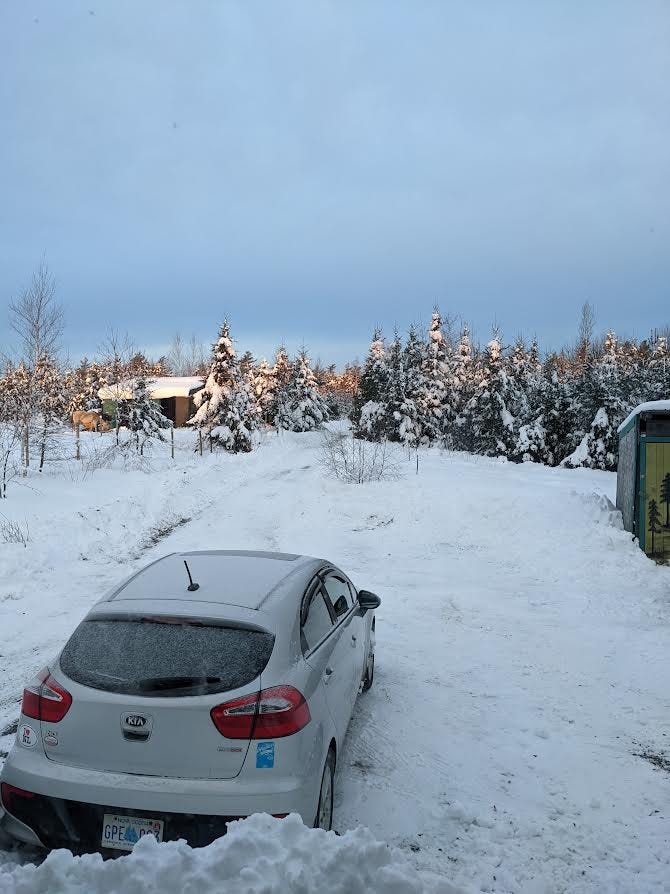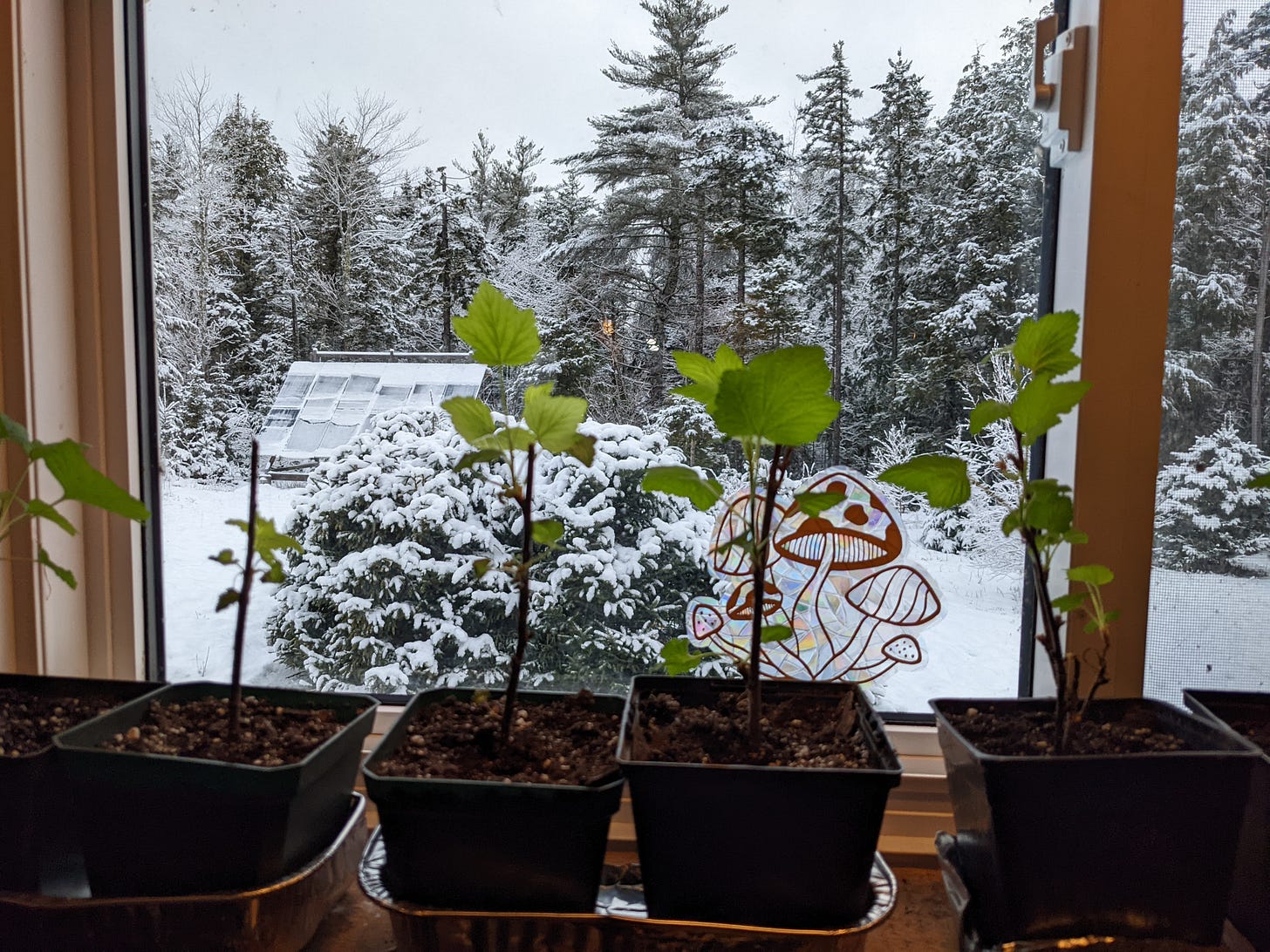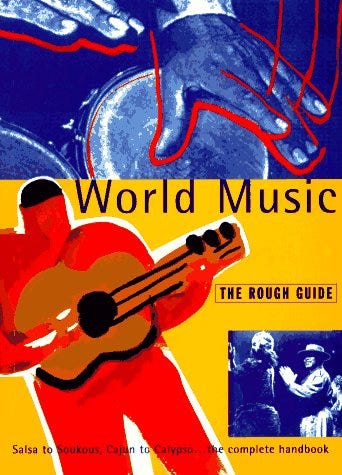Sheila's brush; Nova Scotia coastal protection not in sight any time soon; dining at the Knot Pub; and more
A brush with winter
Mabel sticks her nose in the picture (L) while Farley goes: “Really? Snow? Again?”
The past couple of weeks in Nova Scotia Sheila has been painting a picture, and she just can’t seem to get it right. So she keeps doing it over and over.
Who is Sheila, and what is the artwork that leaves her so unsatisfied?
In this instance, it’s Sheila’s Brush. The latter is widely called a “superstition” related to a snow storm following Saint Patrick’s Day.
According to the wonderful blog, Product of Newfoundland, a number of Sheila origin stories exist beyond the generally acknowledged idea that Sheila’s Brush arrived in Newfoundland with the Irish, and marks a storm that sweeps away the previous season.
The blog purports that Newfoundland once called March 18 Sheila’s Day, extending the revelery of Saint Patrick’s by another day. “In his 1832 book British America John M’Gregor wrote: ‘St. Patrick’s day, and Sheelagh’s day (the saint’s wife) the day following, are occasions on which the mass of Newfoundland Irish revel in the full glory of feasting and drinking. They are certainly at those periods beyond any control; and they completely forget themselves, fighting and drinking, until they are overcome by the one, or laid up by the other.’”
Sheila’s Brush can also arrive ahead of Saint Patricks, marking a poor spring. We experienced that in Nova Scotia this year, with a large storm just ahead of the saint’s day. A poor spring? Well, it’s been mixed weather, for sure, with some beautiful days offset with grey, sulky ones full of sleet. I’ll take them all.
While we’re now officially into spring, it seems like winter is unwilling to relinquish its hold on the land. Every second day, it seems, we wake up and find another coating of snow from overnight.
As beautiful as it is to look at, Sheila seems determined to get it just so, and hasn’t yet nailed her painting.
Despite that, the lilies have poked their green shoots through the earth. The blue jays have returned. And the other night three packs of coyotes traded howls around the marsh. Spring is here; we just need Sheila to get it just so now.
Really, though, this is just a grand excuse for me to post some lovely photos of snow around our home. I hope you enjoy them. Thanks for reading, as always.
Provincial minister delays Coastal Protection Act
The Nova Scotia government is backing down from introducing the Coastal Protection Act. Environment Minister Tim Halman told CBC News this week that more community consultation is needed before the act is introduced. He said many property owners don’t understand the regulations and that they need to know what they are about.
The minister’s comments come after a number of parties, including this writer, raised questions about the long overdue act. The act was supposed to have been introduced in the first half of this year.
At this point, the minister isn’t committing to any time frame for the act.
Both the provincial NDP and Liberals criticized the decision to delay protection for the province’s shoreline.
The Municipality of the District of Lunenburg also intervened, asking for a moratorium on coastal development within its boundaries, CBC reported.
"Nova Scotia's coastline as we know it is being depleted with development, and that natural shoreline that we have come accustomed to having is getting less and less as we move forward," Mayor Carolyn Bolivar-Getson told the broadcaster.
A recent number of pressures on the provincial coastline have pointed to the increasing and urgent need for legislation to protect the shoreline and its features.
They include consultation on the placement of fish farms; private development along the shoreline; and further proposed developments to coastal parks already impacted from overcrowding.
Will Balser, coastal adaptation coordinator with the EAC, said “We should have had these regulations years ago.”
For Halman to call for more community consultation is both bizarre and disingenuous. The provincial government released a report in March 2022 titled What We Heard, and which encompassed consultations on the act.
Halman himself wrote in the introduction to the report, which he endorsed and signed off on: “The Act will help ensure new development along our coast happens where it is less vulnerable to coastal flooding and erosion. At the same time, it will help avoid unnecessary interference with the dynamic nature of our coast and coastal ecosystems which Nova Scotians value for the habitat and natural protection they provide.”
More than 250 individuals and groups provided input into the proposed regulations at the time.
It’s clear from his background that Halman’s real passion is not the environment but rather education. Halman is a former educator who was first elected to the Nova Scotia House of Assembly as MLA for Dartmouth East in 2017, and re-elected in 2021. For 13 years, he taught social studies at Prince Andrew High School. In 2015, he was nominated by the Halifax Regional School Board for the Superintendents Award for Teaching Excellence.
In his current position as the provincial minister of Environment and Climate Change, Halman is no stranger to controversy. Halman alienated a number of environmentalists in late 2022 when he tied a fundraising campaign for the Progressive Conservative Party of Nova Scotia to the upcoming federal carbon tax while still acting as Minister of the Environment and Climate Change.
He sent a mail-out asking members and supporters of the party to fight “Justin Trudeau’s punishing carbon tax on Nova Scotians,” according to a news story.
In turn, the Sierra Club Canada has accused Halman of "spreading disinformation" in his four-page mail-out and the accompanying petition.
"It's the kind of thing you might expect from [former U.S. President Donald] Trump, but not from a Canadian government," Tynette Deveaux, head of the organization's Beyond Coal campaign, told the news outlet.
The federal government’s carbon tax is designed to offset the cost to low-and-middle-class income earners with a rebate up to 90 percent, while wealthier individuals will pay more of the cost. A full explanation of how the carbon tax works may be found here.
In terms of the Coastal Protection Act, the time for consultation is past. The act is needed now. Halman played an important role in the previously done consultation. But given, for whatever reason, that he doesn’t seem to believe he can deliver the act in a timely fashion, perhaps he should remove himself from his ministerial position to make room for someone who can.
Local love: Dining at the Knot Pub
The Knot Burger.
If you’re looking for a modern Lunenburg institution, then the Knot Pub would have to qualify. In a constantly changing tourist town, the knot dates back to 1987 - admittedly not a long time given Lunenburg’s history - therefore the qualifier “modern.”
Consider that 10 years ago on the South Shore, the current number of restaurants and amenities we currently have did not exist. According to the pub’s website: “Denyse and her partners opened the Knot in 1987 ‘on a wing and a prayer.’” The Denyse in this instance would be Denyse Flower.
Locals love the pub. It’s always packed, and with good reason. The night we popped in for a drink and dinner, service was courteous; the food delicious; and the joint bustled with good cheer. Without exception, everyone looked like they were having a good time.
Orders of potato skins kept issuing from the kitchen. At first I thought they were nachos, but the Knot’s potato skins are extraordinarily popular, apparently. A diner across from me received a Ceasar salad that was so large she ended up packing half of it up for take-away. Her spouse’s burger did nothing to relieve my hunger while we waited for our order to arrive. I considered lunging across the bar, and noshing into what looked like a fantastic burger, but good sense and Canadian manners prevailed.
Steph ordered sweet potato fries, which quickly vanished from her plate. I went for a Knot speciality: the Knot Burger. In this instance, the “burger” is actually a patty of Lunenburg sausage on a bun with Swiss cheese draped over it, and smothered in locally produced sauerkraut. A giant dill pickle spear came on the side along with a generous accompaniment of fries. I don’t believe anyone at the pub noticed me trembling with anticipation. Experimentally, I clenched and unclenched my jaw in preparation for the feast ahead.
The burger is a classic, spicy, juicy, and filling. After wolfing it down, I could have easily curled up on the curved half-booth we were seated at, and slept away the night.
The Knot’s prices are also reasonable. As lovely as it is to live near an UNESCO World Heritage Site, it’s a fact that in tourist towns you can often end up paying tourist prices.
While the pub was originally destined to be a German-style pub in keeping with the local culture, according to the Knot’s website, the town’s seafaring history won out. The site notes that for hundreds of years oak was the traditional wood used for boat building in Lunenburg. Most of the oak inside the pub comes from Flower’s father’s barn in nearby Wentzell’s Lake.
The pub is full of nautical brass fittings, most of them from the Lunenburg Foundry down the street, while Flower decided to place the copper pennies on the ceiling for an extra interior touch.
Perhaps the pub was meant to be Germanic in style and is nautical now, but there’s no denying that its exterior owes more to Tolkien’s Shire than anything else. From the outside, the Knot Pub bears an amazing resemblance to a hobbit house.
Not the Knot. The Knot shows up in a cameo in the Netflix series, The Sinner.
The Knot makes an appearance in season four of the Netflix series, The Sinner, which stars Bill Pullman. But if you’re lucky, you might catch an apparition of your own at the Knot one night; a resident ghost, a woman, is known to drift through the rooms. Undoubtedly, she’s looking for her misplaced Knot Burger.
Local notes
Here’s a sure sign of spring: Chicory Blue General Store reopened March 31. For more information on the store and it’s offerings, scroll down to my previous post here.
The Lunenburg Folk Harbour Folk Festival has announced its evening line-up at the main stage tent. Headlining artists include David Myles, Lennie Gallant, Measha Brueggergosman, Catherine MacLellan, and Jane Siberry. The festival runs from August 10 to 13th.
What I’m reading
“I grew up under an ash tree,” begins Robert Penn’s beguiling book, The Man Who Made Things out of Trees. Welsh writer Penn soon decided the best way to learn more about the ash - a remarkable and versatile tree used to make all manner of things - was to fell one, and then turn it over to a number of craftspeople for fashioning into wheels, bowls, and axe handles, among other objects. What ensues is a fascinating mix of natural and cultural history about the role of the ash. Along the way, you’ll learn a lot about the properties of wood, a number of crafts once popular but now fading away, along with some lovely meditations on the land and its treed areas. Penn has carved a charming and intelligent book out of The Man Who Made Things out of Trees.
What I’m listening to
Mama Africa, as South African singer and activist Miriam Makeba was known, could emulate any and every pop style as she clearly shows on Reflections. The latter is a look back at the vocalist’s remarkable career.
Makeba’s career began with the Manhattan Brothers, a popular South African jazz group who, according to the Rough Guide to World Music, helped lead the way for such popular singing groups as the Mills Brothers and the Inkspots. Through her work with the Manhattan Brothers, she came to the attention of Harry Belafonte, leading to a joint Grammy Award for their recording, An Evening with Belafonte and Makeba in 1963.
Reflections contains, among others things, The Click Song - one of her most famous recordings, which cemented her early fame. At this point, in the United States, Makeba began to advocate against apartheid at the United Nations. The Rough Guide reports that the South African government, “irritated by the glare of adverse publicity, responded by revoking her citizenship and right of return.”
Reflections spans Makeba’s career, including the Afro-pop-drenched Pata Pata; African Convention with its lilting guitars that by the song’s end transitions into full-on pumping reggae dancehall track; and the Hugh Masekela-composed ballad, Where Are You Going?
This is a collection rightly called a classic.












